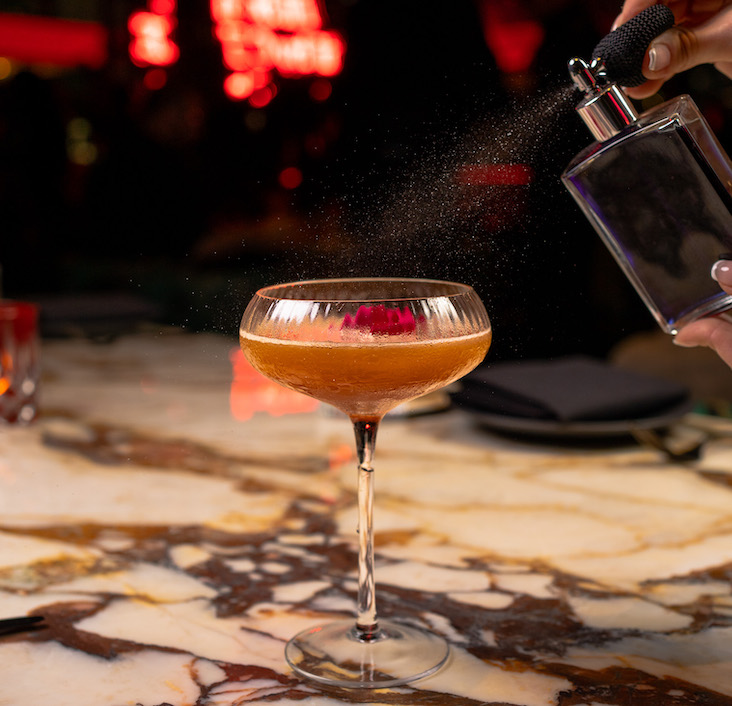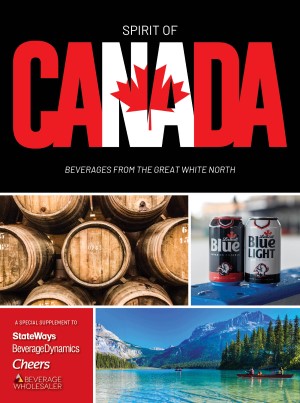“There is a real international trend right now,” says David Wondrich, cocktail historian and co-founder of the bartender training organization, Beverage Alcohol Resource (BAR). “More and more bartenders are going onto the internet and exchanging information. It’s not so much about the local traditions, which is how bartending used to be taught. At the BAR school where I teach, there are bartenders from all over that go back and train others in their market.”
Still, Wondrich notes differences in the drink styles of each city. “London tends to put a little more flourish into the technique,” he explains. “New York is down to earth, and they are quicker. In San Francisco, some of the bars are catching up a little on technique, but they are way ahead on fresh and unique ingredients.” Overall, though, Wondrich notes, “cocktail menus tend to be more sophisticated than they used to be. They feature the classics to show you where they are coming from, innovative drinks and new creations of their own.”
Global trends clearly have been developing the past few years; all three cities are rooted in the classics to varying degrees, and all are moving toward more aromatic cocktails. But each market must cater to local tastes. So while there are a great number of similarities, each capital puts its own twist on the way drinks are made.
Classic New York
The trend is not just about the classic cocktail, but the very idea of the speakeasy. Audrey Saunders, owner and bar manager at Pegu Club, says the speakeasy trend is a way for mixologists to really pay homage to the lost tradition of creating a cocktail. “These smaller environments allow them to take more time, so the bartender is able to invest more thoughtfulness into the drink preparation. It is the modern day bartender’s way of tipping his hat to the Prohibition bartenders.”
David Kaplan, owner of Death & Co., also acknowledges this trend. “Thriving in the city are the pseudo-speakeasies, but we are moving past that,” he says. “New York has broadened its scope. It’s now about the cocktail and not the surroundings, though often they go hand-in-hand.”
Saunders agrees. “I’m hearing people asking, ‘what happened to fun drinks?’ At this point, I think everyone has their skills back, and what’s frustrating to a few of us seniors is that the cocktail scene has gotten way too serious. We want to have some fun.”
The focus on the classics really brought the more boozy and aromatic cocktails, says Saunders, but she’s partial to more aperitif-oriented drinks. An example of this is the Cucumber Mint Creole, which is made with aquavit, gin, sherry, a touch of lemon and both muddled cucumber and mint. “It’s a lighter, aperitif cocktail. It’s not necessarily heavily aromatic like a Martini or a sour,” she notes.
Deeply rooted in tradition, cocktail menus in New York that feature the classics are everywhere. That’s not to say, however, that there isn’t also experimentation.
“We have classic tweaks,” notes Kaplan. For example, the Oaxaca Old Fashioned at Death & Co., $13, is made with El Tesoro Reposado Tequila, Mezcal Los Amantes, agave nectar, Angostura Bitters and a flamed orange twist. “It’s taking a classic structure and paying homage to history while adding a new twist,” he says.
“New York is a busy city, so most cocktail groups go for drinks with fewer ingredients and faster pickup, says William Tigertt, owner of Freemans Restaurant. “People don’t have to drive home, and they expect great drinks and the best service.”
Freemans’ menu is big on brown spirits, and they focus mainly on whiskeys and rums. “Our menu is made up of very accessible drinks, though we do try some different things,” he says. For example, Freemans features a cocktail called “A Death in The Evening,” $12, that is a riff on the classic drink in Hemingway’s book, Death in The Afternoon. “The Death in the Afternoon [cocktail] is simply Champagne and absinthe over crushed ice. Our drink uses Bénédictine, Champagne, lemon twist and an absinthe rinse,” says Tigertt. Meanwhile, at Death & Co., Miller uses a lot of infusions and homemade syrups. “The whole thing is trying to break new ground if there is any to be broken,” he says. “The great cocktails are already out there; everything else is just six degrees of separation.”
Fresh from San Francisco
“We pay attention to the farms where our meat comes from and where our food is grown,” says Greg Lindgren, a partner in Rye, Rosewood Bar and 15 Romolo in San Francisco, and this extends to the bar. “We work with whatever is fresh and in season—citrus, bergamots, kumquats,” he says. For example, Lindgren uses fresh produce and local spirits in the cocktail, the Grey Lady, priced at $9 and made with Distillery No. 209 Gin, fresh bergamot juice, fresh lemon juice, homemade Earl Grey tea syrup, bergamot zest and one small egg white.
“A lot of the folks out here come from a kitchen background,” adds Bourbon & Branch bartender Erick Castro, “and we have the full support of the kitchen.” He notes that this relationship also stems from the green movement. “It’s all about not wasting things. If a chef made a caramelized fig that was left over, I would then be able to make a cocktail out of that.”
“We have our mixologists going to these markets and bringing back locally produced products to use in the drinks,” says Brian Sheehy, co-owner of Anú, Swig, Bourbon & Branch and the retail store, Cask, and co-founder of beverage consultancy, Future Bars. Bourbon & Branch has “Lab Tuesdays” where bartenders come in with a bunch of different ingredients and experiment with the cocktails.
The fresh market trend has introduced the mixology field to much innovation and experimentation. For example, Daniel Hyatt, bar master at Alembic, makes a Southside, $10, with fresh celery juice. “That’s something you wouldn’t have tried before,” he says. Alembic also features their market-fresh rendition of The Bee’s Knees for $9, which is made with Plymouth Gin, lavender honey and a splash of lemon juice.
The local mentality has created camaraderie, too. “There is a big community of bartenders and mixologists here,” notes Hyatt. “There is such a diverse group that the movement has really built up a lot of momentum. Fine dining restaurants and neighborhood bars are developing bar programs and raising the knowledge base of the clients, so they are looking for something different.”
In a nutshell: “Our bartender culture has been developing in a highly enthusiastic and collaborative way,” says Lindgren. “It’s a natural progression of the Bay Area having an abundance of high-quality restaurants and chef talent; its spilled over into the bar.”
London Experimentation
Across the pond in London, cocktails exhibit a spirit of experimentation while also incorporating many New York and San Francisco trends. The eclectic nature of London’s scene is exemplified by the drink diversity at individual venues.
“London has gotten to the stage where there are lots of different styles, not just one overall style. We have the classics, modern drinks and aperitif stuff,” says Tony Conigliaro, bar master at Shochu. He notes that “people have really developed their own styles of drinks. Bartenders are becoming more like chefs—they have a particular style—and people go to specific places to get certain types of drinks.”
Noting that some of the experimentation may have died down, Conigliaro says that “it’s less about inventing a modern classic than how to integrate drinks. For example, we have a Whisky Sour on our list where we use licorice syrup, made in-house with fresh licorice.” The lounge also features numerous shochu cocktails, which are made with shochu marinated with macerated seasonal fruits.
“London is at the forefront of cocktail-making,” says Douglas Ankrah, legendary London mixologist and co-owner of Townhouse and Lab. “People that work in bars are full-time, so we take it very seriously. We are innovative and experimental—and always use good spirits and juices. The current trend is toward aromatic cocktails from fruity.”
For example, at Townhouse they feature the Monarch, £7.25 ($11), which is made with Bombay Sapphire Gin, elderflower liqueur, lemon, peach bitters and a touch of sugar. “It’s almost a new classic,” says Ankrah.
London itself also has some classic roots. “People were making mixed drinks in Europe at the same time as they were doing so in the U.S.,” notes Nick Strangeway of Hawksmoor and Green & Red Bar & Cantina. “It’s nice to rediscover some of the historical classics from Europe. Punch, for example, is an elegant, refreshing drink that has a European past.”
London classics are the focus at The Lonsdale. “Our surroundings are from the early-1900s, but the cocktail list goes back to the 1500s,” says Rebecca “Bex” Almqvist, bar manager. “We take a chance and make a Mojito like Richard drank. It’s made with mint stalks (which give a bitterness), rum, cacaçha, cubed ice, sugar syrup and still water, served with a wooden spoon. The mix of the alcohol is because rum wasn’t as refined back then, so the cacaçha gives a roughness.” The Lonsdale also features numerous punches on its menu.
When you think of London, you don’t immediately think of local produce, but the mixologists do. “We market-source all of the fruit from the local market around the corner from the bar,” says Almqvist, “and we aren’t the only ones.”
Strangeway concurs. “There is a definite trend to use seasonal and regional ingredients. People are all sourcing things locally to preserve the flavors,” he says. “The flavor profile that you get in Northern European fruits is sour for the most part. Rhubarbs have a tartness that you can’t find anywhere else. The U.K. palate accepts that as sour.” Strangeway makes a cocktail with rhubarb-infused gin, ginger beer and lemon, for instance.
At the end of the day, though, the customers always are right. “Bartenders make what the customers like,” says Ankrah, “and right now that is classic and aromatic-style cocktails.”
As commerce and cuisine become more global in nature, so too are cocktails. Wondrich, for one, welcomes the cross-pollination of cocktail ideas and processes. “Global cocktail style is evolving to become the same as the restaurant style,” says Wondrich. “Of course you use the best ingredients, and of course your bartenders have studied their craft. This will allow people to focus on the hospitality of the place.”
Related Stories
Going Local in San Francisco




